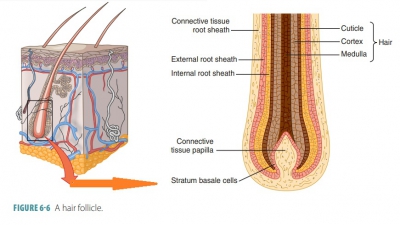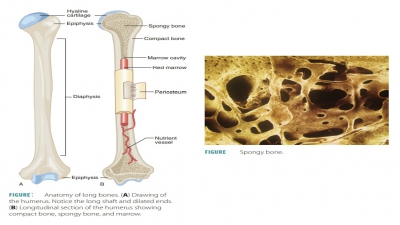Skin Cancer
| Home | | Anatomy and Physiology | | Anatomy and Physiology Health Education (APHE) |Chapter: Anatomy and Physiology for Health Professionals: Support and Movement: Integumentary System
1. What type of skin cancer is the most malignant? 2. What is the rule used for recognizing melanoma?
Skin Cancer
Skin cancers originating from
epithelial cells are called cutaneous
carcinomas (squamous cell carcinomas or
basal cell carcinomas), whereas those arising from melanocytes are cutaneous melanomas (melanocar-cinomas
or malignant melanomas). The UV rays of the sun can cause skin cancer, usually
on the head and neck because they are the areas most exposed. Fair-skinned
people and elderly people are the most likely candidates for skin cancer. The
use of sunscreen or sunblock of minimum SPF-15 may protect against sunburn
(including UVA and UVB rays), but not completely against skin cancer. Genetic
factors and hormones may influence a person’s chance for devel-oping skin
cancer. Although very common, skin can-cer is one of the easiest forms of
cancer to diagnose and treat. When detected and treated early, survival rates
are high. The three types of skin cancer, named for the specific epidermal
cells in which they originate, are:
■■ Basal cell carcinoma: The most
common yet least dangerous type, it begins in the stratum basale, invading the
dermis. A small, shiny lesion appears as a “bump” on the skin, which enlarges
to form a central depression with a beaded, pearl like edge (FIGURE 6-9).
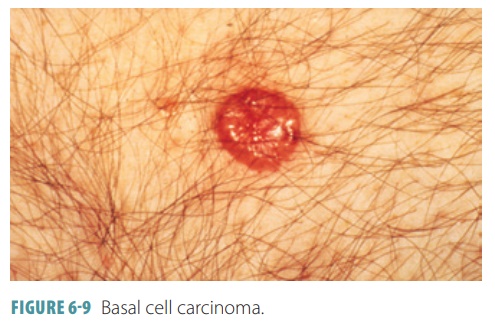
■■ Squamous cell
carcinoma: It begins in the
keratino-cytes of the stratum spinosum; the lesion appears raised, reddened,
and scaly, forming a concave ulcer with edges that are raised (FIGURE 6-10).
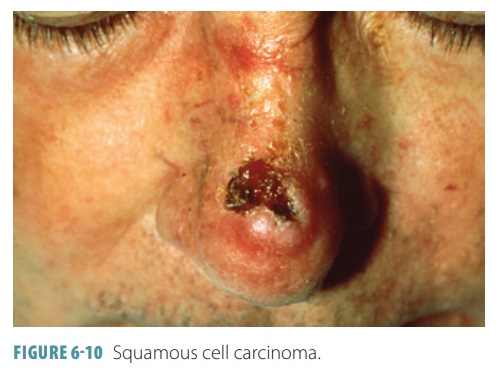
Early detection and surgical
removal raises the survival rate, but this cancer often metastasizes to the
lymph nodes to become potentially fatal.
■■ Malignant melanoma: This much
more serious form of skin cancer is increasing in incidence. It often starts in
the melanocytes of a preexisting mole, metastasizing quickly. It is often fatal
if not treated immediately. The lesion appears as a large, flat, dark-colored
patch that spreads and has a “scalloped” border (FIGURE 6-11). According to the
American Cancer Society, the ABCD Rule should be used for recognizing melanoma:
·
Asymmetry: The two sides of a
mole or pig-mented spot do not match
·
Border irregularity: The lesion’s
borders have indentations
·
Color: There are several colors
in the pig-mented spot, such as black, brown, tan, and occasionally blue or red
·
Diameter: The lesion is larger
than a pencil eraser (approximately 6 mm in diameter)
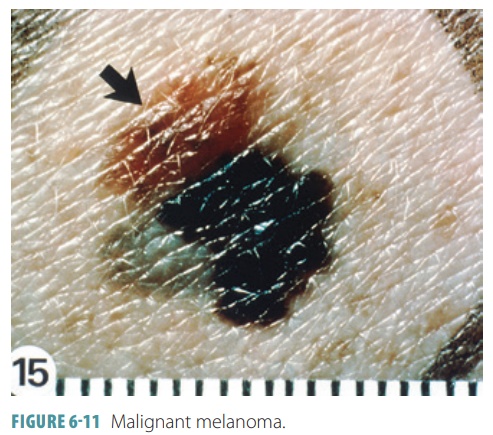
1. What
type of skin cancer is the most malignant?
2. What is
the rule used for recognizing melanoma?
Related Topics
